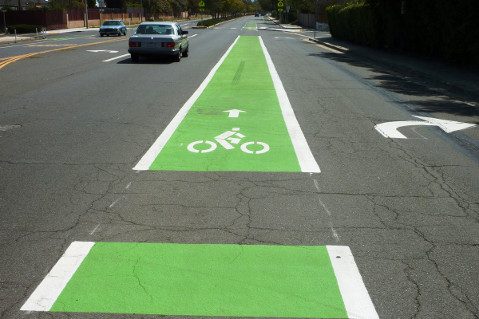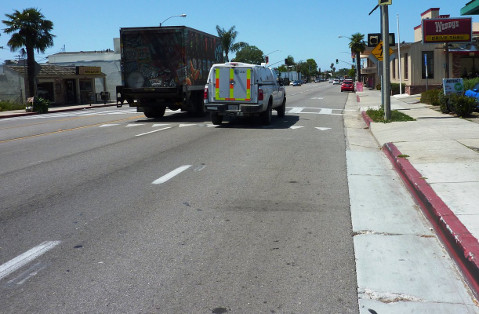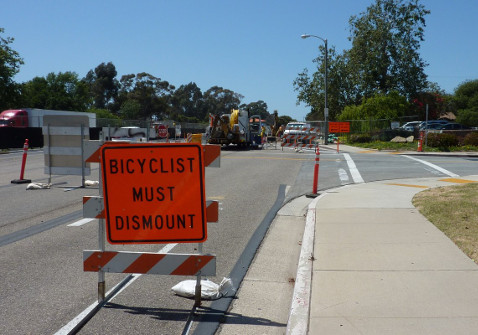Public Health Menace Grows
Hundreds of Injuries, and a Few Fatalities, Don't Make the Cut

What if I told you that mounting cases of Ebola are occurring right here in Santa Barbara County? If in 2012 alone, at least one death and 270 nonfatal incidences resulted from Ebola here? That the City of Santa Barbara reported one death and 106 nonlethal Ebola related incidences. The City of Goleta that year experienced no deaths but recorded 19 nonfatal Ebola incidences. And that while the deaths were widely reported, many nonfatal incidences have likely gone unnoticed or even unreported. I wonder if we would simply become numb to this alarming threat to the safety and health of our community?
The truth is that in recent years, those cases of death and injury resulted not from Ebola but from bicycling in our community. And while Ebola may never occur here, the number of people bicycling throughout Santa Barbara is rising rapidly, and it’s likely that bicycling-related deaths and injuries will rise in tandem (pun intended). According to a City of Santa Barbara September 2014 media release, by that time, there had been a 26 percent increase in bicycle traffic collisions compared to the year-to-date figure from 2013, and a 44 percent increase compared to the same period in 2012.

Why does the mere suggestion of Ebola send shock waves across our community while the regularly occurring biking-related deaths and injuries meet with little clamor and even a little acceptance? Why do we so carefully collect and monitor data on Ebola, which has not occurred here, yet we collect so little current data on biking deaths and injuries that occur almost daily?
Comparing Ebola with biking is in no way meant to minimize or trivialize the dangers presented by Ebola. But the disease isn’t here, and biking-related deaths and injuries are a current and present public health issue right here and right now. Unlike Ebola, biking is rising in popularity and offers many economic, health, and recreational benefits. Riding a bicycle creates an alternative to the high cost of car ownership, reduces the cost of road repairs and maintenance, and promotes both tourism and fitness. Could the relative lack of concern over biking deaths and injuries be a way to rationalize the collateral damage that comes with the significant benefits we all get from biking?
Some might justify the greater anxiety about Ebola because there is no known cure, while there are well-known best practices for reducing and even eliminating biking-related deaths and injuries. Many communities have significantly reduced deaths and injuries through better education for bikers and motor vehicle drivers, increased enforcement of both motor vehicle and bike regulations, lowered speed limits, and helmet and bike light subsidies. Other communities have reduced deaths and injuries by devoting a fair share of infrastructure funding for improved bike lanes, roads, lighting and signage. But if anything, knowing that proven “cures” for biking death and injuries exist should motivate us to action, just as the nation leapt into action to wipe out polio when a cure was found.

So the first logical step is to rip the steering wheels from drivers’ fingers, confiscate all their cars, grind them up, and recycle them into bikes and bike lanes. NO! NO! NO! That’s a preposterous myth. No one wants to impair motor vehicle drivers’ rights and privileges. There are countless communities that have successfully reduced bike deaths and injuries without impinging on the motorized public.
Our comparatively greater Ebola anxiety might also be justified by some who would say, “Ebola is contagious; biking-related deaths and injuries are not.” However, in a way, conditions that give rise to biking-related deaths and injuries are contagious, too. We know that ignoring crumbling roads, violations of the rules of the road, and helmet laws will only increase the spread of these problems. Conversely, safe and courteous driving practices have also proved contagious.
How should our community get on the road to reducing biking-related deaths and injuries? Individually, we bike riders and car drivers should begin by not engaging in LEWD behavior (Looking at Electronics While Driving). It’s not only good law but common sense to minimize distractions while driving.
Also, we should put at least as much effort into collecting biking data as we do collecting Ebola data. If you want to find data on communicable diseases from AIDs to Ebola and West Nile Virus as current as 2014, you can quickly locate it at the county’s Public Health website. Indeed, one of the website pages also makes it clear which diseases, including Ebola, must be reported rapidly and how.
In contrast, it’s much harder to find much good, current data or reporting methods on biking-related deaths and injuries, even though they are much more prevalent. I could find no links at the City of Goleta or S.B. County Sheriff’s site to easily report a bike-related accident (the County Sheriff provides Goleta’s policing services). So if a bike rider is injured when sideswiped by a car that leaves the scene, the only recourse seems to be to file a generic police report in person or by phone.
Other jurisdictions provide more specific bike-accident reporting forms and guidelines that we could consider using locally. Since the early days of cholera epidemics, we have known that reducing injuries and deaths depends on fast data reporting and collection methods. We need to employ the same kinds of tools to reduce bike and car accidents.
As biking accelerates in our community, our efforts to brake the growth of related deaths and injuries must shift into a higher gear. We can begin by joining the pack, employing best practices that have proven effective elsewhere in curtailing deaths and injuries. But eventually we can pick up the pace and sprint to become leaders in the race to make biking safer for everyone who rides a bike for commuting, pleasure, and exercise.



